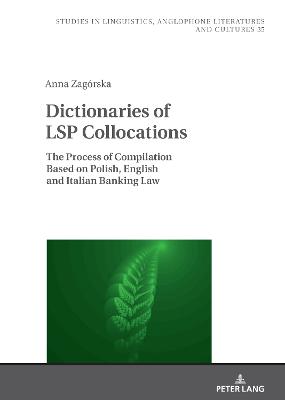English with an Accent
 -10%
portes grátis
-10%
portes grátis
English with an Accent
Language, Ideology, and Discrimination in the United States
Cramer, Jennifer; McGowan, Kevin B.; Barrett, Rusty
Taylor & Francis Ltd
11/2022
352
Mole
Inglês
9781138041936
15 a 20 dias
Descrição não disponível.
Contents
List of Figures
List of Tables
The International Phonetic Alphabet
Preface to the Third Edition
Chapter One: The pronunciation of difference
Reproducing inequality
Discourse structural racism
Language ideologies
Red summer
Where we are headed
Discussion questions
Chapter Two: Language, categorization, and social identities
Fifty shades of grue
Only skin deep
Sorting humanity
Categories and cognition
Is that a sandwich?
Some basic semiotics
Language and racialization
Discussion questions
Chapter Three: Things linguists know about language
Facts about language
Linguistic potential
Variety is the spice of life!
Are you a robot?
So-called Standard English
Communicative effectiveness depends on variation
Discussion questions
Chapter Four: Language subordination
Reading a textbook: roles and responsibilities
Rejecting the gift: the individual's role in the communicative process
Hesitance and uncertainty?
Standard language ideology
Confronting ideologies
Discussion questions
Chapter Five: Place-based variation in the American context
The social meaning of place
Regional varieties of American English
Spread the word
Vowels on the move
Regional variation in morphology and syntax
OMG! There's, like, so much more variation!
Structured variation: the hidden life of language
Discussion questions
Chapter Six: Language, racialization, and racism
No MSG
Race, ethnicity, and linguistic variation
Ethnicity-indexing variation: words and sounds
Ethnicity-indexing variation: sentences and meanings
No MSG, no lazy grammar
Language, interaction, and ethnic inequality
Language, race, appropriation, and whiteness
Language is love
Discussion questions
Chapter Seven: Language diversity in the United States
Estados Unidos no tiene un idioma oficial
Language abundance
Stolen childhoods
Language ideologies and English public space
Embracing bilingualism
Discussion questions
Chapter Eight: American Sign Language and deaf culture
How people communicate
What it means to be hearing
Deaf culture
Sign languages and American Sign Language
Martha's Vineyard Sign Language
Oralism vs. manualism
Language ideology and deaf culture
Ideologies within the deaf community
Discussion questions
Chapter Nine: Putting language on the map
How we see the language around us
Perceptual dialectology
Linguistic landscapes
The linguistic perception of the American South
Kountry Livin'
What it means to sound Southern
Perceptions meet strategies of condescension
Discussion questions
Chapter Ten: A history of 'r' in the United States
Meaningful, important, and arbitrary
The remarkable letter 'r'
Rhotics: variety, terminology, and symbols
American [?] is wei(r)d
Where did American [?] come from?
From non-rhotic to rhotic: American sound change in the first half of the 20th century
Non-rhotic in Manhattan
Discussion questions
Chapter Eleven: The communicative burden in education
The medium of instruction
Invisible ideologies go to school
The setting of goals
Whose language?
Appropriacy arguments
Languagelessness
Education as cultural assimilation
How teachers talk
How graduate students talk
What the science tells us
Discussion questions
Chapter Twelve: Language use, media stereotypes, and fake news
Storytellers, Inc.
Teaching children how to discriminate
Building on stereotypes
Disney's worldview
Information literacy: beyond cartoons
Echo chambers and filter bubbles
Bad is stronger than good
Discussion questions
Chapter Thirteen: Language in the workplace
Unwelcoming environments
Sorry not sorry
"This is America, speak English!"
"Nobody can understand those people"
"You sound so insecure when you talk the way I do"
"You're so much prettier when you're not angry"
White men talking
Discussion questions
Chapter Fourteen: Examining the American judicial system and housing
Language(s) and the law
Lost in translation
Linguists as experts
American housing problems
Heard but not seen
I had you at "hello"
A human failing
Discussion questions
Epilogue: Teach your children well
Honesty & equality & respect & linguistic diversity
You must be carefully taught
Our hope for you, dear reader
Bibliography
Index
List of Figures
List of Tables
The International Phonetic Alphabet
Preface to the Third Edition
Chapter One: The pronunciation of difference
Reproducing inequality
Discourse structural racism
Language ideologies
Red summer
Where we are headed
Discussion questions
Chapter Two: Language, categorization, and social identities
Fifty shades of grue
Only skin deep
Sorting humanity
Categories and cognition
Is that a sandwich?
Some basic semiotics
Language and racialization
Discussion questions
Chapter Three: Things linguists know about language
Facts about language
Linguistic potential
Variety is the spice of life!
Are you a robot?
So-called Standard English
Communicative effectiveness depends on variation
Discussion questions
Chapter Four: Language subordination
Reading a textbook: roles and responsibilities
Rejecting the gift: the individual's role in the communicative process
Hesitance and uncertainty?
Standard language ideology
Confronting ideologies
Discussion questions
Chapter Five: Place-based variation in the American context
The social meaning of place
Regional varieties of American English
Spread the word
Vowels on the move
Regional variation in morphology and syntax
OMG! There's, like, so much more variation!
Structured variation: the hidden life of language
Discussion questions
Chapter Six: Language, racialization, and racism
No MSG
Race, ethnicity, and linguistic variation
Ethnicity-indexing variation: words and sounds
Ethnicity-indexing variation: sentences and meanings
No MSG, no lazy grammar
Language, interaction, and ethnic inequality
Language, race, appropriation, and whiteness
Language is love
Discussion questions
Chapter Seven: Language diversity in the United States
Estados Unidos no tiene un idioma oficial
Language abundance
Stolen childhoods
Language ideologies and English public space
Embracing bilingualism
Discussion questions
Chapter Eight: American Sign Language and deaf culture
How people communicate
What it means to be hearing
Deaf culture
Sign languages and American Sign Language
Martha's Vineyard Sign Language
Oralism vs. manualism
Language ideology and deaf culture
Ideologies within the deaf community
Discussion questions
Chapter Nine: Putting language on the map
How we see the language around us
Perceptual dialectology
Linguistic landscapes
The linguistic perception of the American South
Kountry Livin'
What it means to sound Southern
Perceptions meet strategies of condescension
Discussion questions
Chapter Ten: A history of 'r' in the United States
Meaningful, important, and arbitrary
The remarkable letter 'r'
Rhotics: variety, terminology, and symbols
American [?] is wei(r)d
Where did American [?] come from?
From non-rhotic to rhotic: American sound change in the first half of the 20th century
Non-rhotic in Manhattan
Discussion questions
Chapter Eleven: The communicative burden in education
The medium of instruction
Invisible ideologies go to school
The setting of goals
Whose language?
Appropriacy arguments
Languagelessness
Education as cultural assimilation
How teachers talk
How graduate students talk
What the science tells us
Discussion questions
Chapter Twelve: Language use, media stereotypes, and fake news
Storytellers, Inc.
Teaching children how to discriminate
Building on stereotypes
Disney's worldview
Information literacy: beyond cartoons
Echo chambers and filter bubbles
Bad is stronger than good
Discussion questions
Chapter Thirteen: Language in the workplace
Unwelcoming environments
Sorry not sorry
"This is America, speak English!"
"Nobody can understand those people"
"You sound so insecure when you talk the way I do"
"You're so much prettier when you're not angry"
White men talking
Discussion questions
Chapter Fourteen: Examining the American judicial system and housing
Language(s) and the law
Lost in translation
Linguists as experts
American housing problems
Heard but not seen
I had you at "hello"
A human failing
Discussion questions
Epilogue: Teach your children well
Honesty & equality & respect & linguistic diversity
You must be carefully taught
Our hope for you, dear reader
Bibliography
Index
Este título pertence ao(s) assunto(s) indicados(s). Para ver outros títulos clique no assunto desejado.
discrimination;united;states;standard;language;ideology;american;subordination;reduction;native;Ebonics debate;Language subordination process;Educational system;Perpetuate social structures;Asian American English;Language Ideology;Young Man;Ethnic Indexing Variation;Rhotic Sounds;QR Code;American Sign Language;Specific Language Impairment;Standard Language Ideology;Latinx Americans;English Grammar;Vocal Folds;Chinese Restaurant Syndrome;African American English;Black Lives Matter;Mock Spanish;Creaky Voice;Perceptual Dialectology;Asl Sign;Deaf People;King George III;Deaf Body;Linguistic Landscape;Cochlear Implants;Deaf Culture;Hearing People
Contents
List of Figures
List of Tables
The International Phonetic Alphabet
Preface to the Third Edition
Chapter One: The pronunciation of difference
Reproducing inequality
Discourse structural racism
Language ideologies
Red summer
Where we are headed
Discussion questions
Chapter Two: Language, categorization, and social identities
Fifty shades of grue
Only skin deep
Sorting humanity
Categories and cognition
Is that a sandwich?
Some basic semiotics
Language and racialization
Discussion questions
Chapter Three: Things linguists know about language
Facts about language
Linguistic potential
Variety is the spice of life!
Are you a robot?
So-called Standard English
Communicative effectiveness depends on variation
Discussion questions
Chapter Four: Language subordination
Reading a textbook: roles and responsibilities
Rejecting the gift: the individual's role in the communicative process
Hesitance and uncertainty?
Standard language ideology
Confronting ideologies
Discussion questions
Chapter Five: Place-based variation in the American context
The social meaning of place
Regional varieties of American English
Spread the word
Vowels on the move
Regional variation in morphology and syntax
OMG! There's, like, so much more variation!
Structured variation: the hidden life of language
Discussion questions
Chapter Six: Language, racialization, and racism
No MSG
Race, ethnicity, and linguistic variation
Ethnicity-indexing variation: words and sounds
Ethnicity-indexing variation: sentences and meanings
No MSG, no lazy grammar
Language, interaction, and ethnic inequality
Language, race, appropriation, and whiteness
Language is love
Discussion questions
Chapter Seven: Language diversity in the United States
Estados Unidos no tiene un idioma oficial
Language abundance
Stolen childhoods
Language ideologies and English public space
Embracing bilingualism
Discussion questions
Chapter Eight: American Sign Language and deaf culture
How people communicate
What it means to be hearing
Deaf culture
Sign languages and American Sign Language
Martha's Vineyard Sign Language
Oralism vs. manualism
Language ideology and deaf culture
Ideologies within the deaf community
Discussion questions
Chapter Nine: Putting language on the map
How we see the language around us
Perceptual dialectology
Linguistic landscapes
The linguistic perception of the American South
Kountry Livin'
What it means to sound Southern
Perceptions meet strategies of condescension
Discussion questions
Chapter Ten: A history of 'r' in the United States
Meaningful, important, and arbitrary
The remarkable letter 'r'
Rhotics: variety, terminology, and symbols
American [?] is wei(r)d
Where did American [?] come from?
From non-rhotic to rhotic: American sound change in the first half of the 20th century
Non-rhotic in Manhattan
Discussion questions
Chapter Eleven: The communicative burden in education
The medium of instruction
Invisible ideologies go to school
The setting of goals
Whose language?
Appropriacy arguments
Languagelessness
Education as cultural assimilation
How teachers talk
How graduate students talk
What the science tells us
Discussion questions
Chapter Twelve: Language use, media stereotypes, and fake news
Storytellers, Inc.
Teaching children how to discriminate
Building on stereotypes
Disney's worldview
Information literacy: beyond cartoons
Echo chambers and filter bubbles
Bad is stronger than good
Discussion questions
Chapter Thirteen: Language in the workplace
Unwelcoming environments
Sorry not sorry
"This is America, speak English!"
"Nobody can understand those people"
"You sound so insecure when you talk the way I do"
"You're so much prettier when you're not angry"
White men talking
Discussion questions
Chapter Fourteen: Examining the American judicial system and housing
Language(s) and the law
Lost in translation
Linguists as experts
American housing problems
Heard but not seen
I had you at "hello"
A human failing
Discussion questions
Epilogue: Teach your children well
Honesty & equality & respect & linguistic diversity
You must be carefully taught
Our hope for you, dear reader
Bibliography
Index
List of Figures
List of Tables
The International Phonetic Alphabet
Preface to the Third Edition
Chapter One: The pronunciation of difference
Reproducing inequality
Discourse structural racism
Language ideologies
Red summer
Where we are headed
Discussion questions
Chapter Two: Language, categorization, and social identities
Fifty shades of grue
Only skin deep
Sorting humanity
Categories and cognition
Is that a sandwich?
Some basic semiotics
Language and racialization
Discussion questions
Chapter Three: Things linguists know about language
Facts about language
Linguistic potential
Variety is the spice of life!
Are you a robot?
So-called Standard English
Communicative effectiveness depends on variation
Discussion questions
Chapter Four: Language subordination
Reading a textbook: roles and responsibilities
Rejecting the gift: the individual's role in the communicative process
Hesitance and uncertainty?
Standard language ideology
Confronting ideologies
Discussion questions
Chapter Five: Place-based variation in the American context
The social meaning of place
Regional varieties of American English
Spread the word
Vowels on the move
Regional variation in morphology and syntax
OMG! There's, like, so much more variation!
Structured variation: the hidden life of language
Discussion questions
Chapter Six: Language, racialization, and racism
No MSG
Race, ethnicity, and linguistic variation
Ethnicity-indexing variation: words and sounds
Ethnicity-indexing variation: sentences and meanings
No MSG, no lazy grammar
Language, interaction, and ethnic inequality
Language, race, appropriation, and whiteness
Language is love
Discussion questions
Chapter Seven: Language diversity in the United States
Estados Unidos no tiene un idioma oficial
Language abundance
Stolen childhoods
Language ideologies and English public space
Embracing bilingualism
Discussion questions
Chapter Eight: American Sign Language and deaf culture
How people communicate
What it means to be hearing
Deaf culture
Sign languages and American Sign Language
Martha's Vineyard Sign Language
Oralism vs. manualism
Language ideology and deaf culture
Ideologies within the deaf community
Discussion questions
Chapter Nine: Putting language on the map
How we see the language around us
Perceptual dialectology
Linguistic landscapes
The linguistic perception of the American South
Kountry Livin'
What it means to sound Southern
Perceptions meet strategies of condescension
Discussion questions
Chapter Ten: A history of 'r' in the United States
Meaningful, important, and arbitrary
The remarkable letter 'r'
Rhotics: variety, terminology, and symbols
American [?] is wei(r)d
Where did American [?] come from?
From non-rhotic to rhotic: American sound change in the first half of the 20th century
Non-rhotic in Manhattan
Discussion questions
Chapter Eleven: The communicative burden in education
The medium of instruction
Invisible ideologies go to school
The setting of goals
Whose language?
Appropriacy arguments
Languagelessness
Education as cultural assimilation
How teachers talk
How graduate students talk
What the science tells us
Discussion questions
Chapter Twelve: Language use, media stereotypes, and fake news
Storytellers, Inc.
Teaching children how to discriminate
Building on stereotypes
Disney's worldview
Information literacy: beyond cartoons
Echo chambers and filter bubbles
Bad is stronger than good
Discussion questions
Chapter Thirteen: Language in the workplace
Unwelcoming environments
Sorry not sorry
"This is America, speak English!"
"Nobody can understand those people"
"You sound so insecure when you talk the way I do"
"You're so much prettier when you're not angry"
White men talking
Discussion questions
Chapter Fourteen: Examining the American judicial system and housing
Language(s) and the law
Lost in translation
Linguists as experts
American housing problems
Heard but not seen
I had you at "hello"
A human failing
Discussion questions
Epilogue: Teach your children well
Honesty & equality & respect & linguistic diversity
You must be carefully taught
Our hope for you, dear reader
Bibliography
Index
Este título pertence ao(s) assunto(s) indicados(s). Para ver outros títulos clique no assunto desejado.
discrimination;united;states;standard;language;ideology;american;subordination;reduction;native;Ebonics debate;Language subordination process;Educational system;Perpetuate social structures;Asian American English;Language Ideology;Young Man;Ethnic Indexing Variation;Rhotic Sounds;QR Code;American Sign Language;Specific Language Impairment;Standard Language Ideology;Latinx Americans;English Grammar;Vocal Folds;Chinese Restaurant Syndrome;African American English;Black Lives Matter;Mock Spanish;Creaky Voice;Perceptual Dialectology;Asl Sign;Deaf People;King George III;Deaf Body;Linguistic Landscape;Cochlear Implants;Deaf Culture;Hearing People







